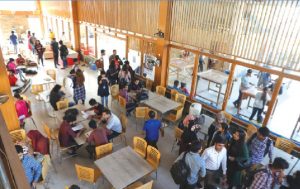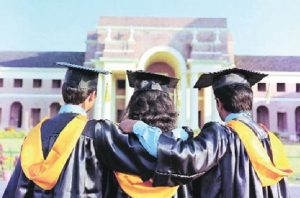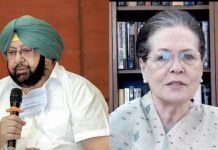 Our new enthusiasm for new education policy is unlikely to start any revolutionary trends. The status quo has developed a new technique for dealing with the threat of change. Our educational revolution has been round the corner for years. The resistance to change comes of the circumstance that the educational system is a monopoly, and behaves like an entrenched monopoly.
Our new enthusiasm for new education policy is unlikely to start any revolutionary trends. The status quo has developed a new technique for dealing with the threat of change. Our educational revolution has been round the corner for years. The resistance to change comes of the circumstance that the educational system is a monopoly, and behaves like an entrenched monopoly.
If it had been a trade like any other, it would by now have attracted the notice of the Monopolies and Restrictive Trade Practices Commission. Dr. J N Kapur in his book Current Issues in Higher Education writes, “Education is a big industry, but it does no consumer or product research. It is a protected industry, and that is why it is inefficient.” The degree of protection may be gauged from the fact that no man can hope to be recognised as educated without degrees and labels.
The reason for this is not far to seek. The educational industry employs nearly five million teachers. It has a young clientele of more than hundred fifty million. In addition, the vested interest surrounding the system include millions of parents who send the young to school, college and university. Many ancillary trades and professions also live on this system.
A great part of the money distributed to colleges and universities from Central and State funds go into bricks, mortar and cement. So it could be claimed that the biggest beneficiaries of our higher education are the building industry.
Despite the mushroom broth of educational institutions throughout the country, the standard and quality of our education has not improved much. Private schools such as DPS and DAV throughout the country are looting the gullible public in the name English medium public schools, colleges are looting in the name of job oriented courses, and universities are fleecing helpless and hapless students in the name of gainful employment.
Further, it is amusing to watch the wrath of educators over the phenomenon of private coaching establishments, that take trustful candidates money on false guarantees of hundred percent success. These C- grade coaching centres promise quick short-cuts to learning, which in actual fact they fail to provide. But the traditional institutions within the educational system, that oblige the young innocent students to take the longer route, also fail to get their clientele to the promised glorious destination.
Our educational institutions cost more than the private coaching classes. However, the money comes from public funds in both the cases. It is not as if the academic community is unaware of the compelling reasons that oblige the students to turn to non — traditional ways of learning.
One reason is that the resources for expanding the traditional system along traditional lines have been exhausted.The 30 hours a week even in a good college may not prevail against what happens in the other 70 odd waking hours spent in the world outside. Seats of learning have, for sheer survival, to strive to create a learning society around them
 A small state like Haryana with a population of just two crore has 250 colleges, both govt and private aided and 23 universities, mostly sub standard having poor infrastructure, ineffective teaching and negligible research. Even a small city like Hisar with a population of just five lakh has three universities, one agriculture, one veterinary and one management and technology.
A small state like Haryana with a population of just two crore has 250 colleges, both govt and private aided and 23 universities, mostly sub standard having poor infrastructure, ineffective teaching and negligible research. Even a small city like Hisar with a population of just five lakh has three universities, one agriculture, one veterinary and one management and technology.
Almost every State Chief Minister has opened a university in the name of his father and thus treating the university as a personal fiefdom. The sole purpose is not to provide any quality education, but to have solid vote bank.
The universities are a State subject should not prevent the UGC from pulling them up for lapses from the right norms.For the Constitution, while listing education, including universities among State subjects, expressly adds that this is subject to the provisions of certain entries in the Union list ,which includes the “ co- ordination and determination of standards in institutions of higher education and research”.
The power and responsibility of the UGC to act is inescapable, when, for instance, universities condone cheating in examinations and thus award spurious degrees, dilute curricular requirements or conduct sub- standard correspondence courses on considerations other than academic.The law is really not so inadequate as those in authority sometimes pretend.
Besides, the power and influence of a university are not expected to be spelt out exhaustively and exclusively in its statutes. By its decisions and attitudes, it is expected to build up such moral authority as individuals and institutions would hesitate to defy.
In the more than a hundred years of the history of our affiliating universities, how many colleges that fell below the minimum norms have lost their affiliation. On the contrary, colleges with sub- standard equipment and personnel, and with no prospect of any great improvement in the future are given affiliation on extraneous considerations.
Recalcitrant DAV Colleges in Punjab, Haryana Chandigarh and HP have been functioning without validly constitute statutoryGoverning Bodies. These errant DAV Colleges are being run through a remote control by the autocratic overlords of non statutory DAV Management New Delhi.
However, much to the chagrin of DAV teachers, the concerned govt and university authorities are mute spectators due to the clout and nexus of super crafty and corrupt DAV organisation.Because of inaction, passivity and connivance of the govt and university, some erring non govt recognised colleges feel emboldened to perpetuate mismanagement to the detriment of teachers.
Consequently, litigations galore against such colleges in particular against incorrigible DAV colleges. There are no statutory substitutes for the will to insist on the right standards. In several cases, the Apex court has held that even the high court directives can’t go contrary to the university statutes. If any court does it so, it means it is telling the authority to disobey the law, which is impermissible.
Several lakh students appear for several entrance tests every year for admissions. The business menu card shows the fee for each test : JEE 1300, CAT 2000, CMAT 1400, SNAP 1750, NMAT 2000, and IIFT 2000. An aspirant for the engineering stream appears in at least six tests and spends about 10000 on the exams. The same is true for medical, UGC NET, ICAR,CSIR NET etc.
The whopping coaching fee for these exams is extra. In fact, in 2019, the Madras High Court was told that only 2 per cent of the students who have no coaching get admission in good engineering and medical colleges.In September 2020, an estimated 22 lakh appeared for the JEE.The test fee on an average collected for JEE is 85 crore.National Testing Agency ( NTA) now conducts JEE and NEET for medical and university entrance tests.
This testing conundrum is reiterated in the current National Education Policy 2020” Online assessment and examinations”The language used under this heading appears to be that of commercial recruiting agency and not that of an experienced academic agency.
The projected market size in India for schooling is $52 billion, graduate education 15 billion, vocational education 5 billion dollars, and the entrance testing business is worth23 billion which means 2.05 lakh crore. Annual examinations are originally conducted by the School Education Boards, Under graduate and post graduate examinations are conducted by universities as it is their mandate to teach, examine, evaluate and give degrees/certificates or diplomas based on results.Most universities have brilliant, reliable and robust system in place with more than 100 years of experience to conduct any type of test or examination.
But slowly they have been replaced through corporate lobbying with such crafty private agencies that have neither the experience in teaching nor in the learning process. In fact, these testing agencies depend upon the very same university examination system.Thus huge infrastructure of around 450 universities in the country created by public money is wasted.
We have now entered a vicious circle that does not guide and teach, but only tests. The vast system of education boards and universities that have hundreds of years of legacy of teaching, learning, research ,extension and examination including testing have been sidelined to pave the way for this mega 2.5 crore market to be handed over — lock, stock and barrel to the private operators.
The eventual victims are the millions of innocent students and their helpless parents who will have to shell out money , not for actual learning, but for testing, by agencies that never taught them and have no idea of education.
The entire process is not a part of academic learning model, nor related to the basic aspect of higher education process of acquiring and utilising knowledge. The current testing is pure business model developed by international business schools and pushed through the WTO.
International business groups and FICCI have jumped in to understand the extent of education service market in India. The testing of candidates for various examinations has lately become one of the most lucrative business initiatives by establishing a testing agency with govt funds and then privatise citing illogical reasons of efficiency, accountability, transparency and probity.
In the education system, learning does not mean rote memorise and recall. It is the process in which learner’s conceptualise the contents and understand how to apply skills and knowledge to solve real life problems. This was the purpose of education in ancient India. The best way to achieve this is to make learning joyful at every level.
letters@tehelka.com












